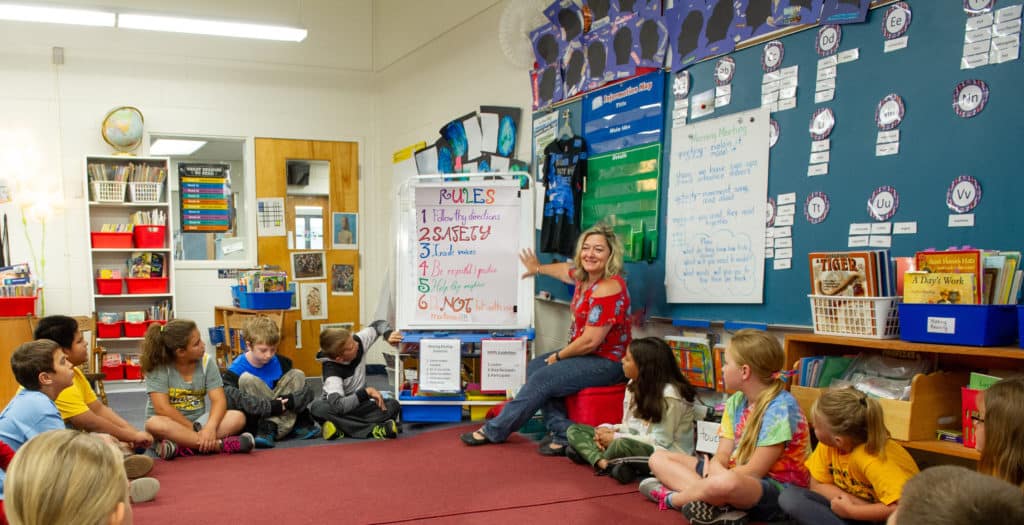
Rules are the backbone of a positive classroom community and the foundation for a year of productive learning. Establishing and practicing expectations at the start of each school year provides students with a sense of safety and security. Frequently discussing classroom rules helps guide students’ actions and prevent misbehavior.
However, teachers often notice increased misbehavior when students leave the classroom, such as during special area classes, recess, and lunchtime. One effective strategy for maintaining consistent behavior throughout the school is using traveling rules. Traveling rules enable students to take their classroom rules with them when they move to different areas of the school. This approach helps students follow the classroom rules even when they’re not with their classroom teacher.
Begin by discussing the concept of traveling rules with special area teachers, lunch and recess monitors, and other adults who supervise students outside the classroom. Collaborate to determine if this strategy would be beneficial. For older grades, traveling rules might be used at the start of the school year until specific expectations are established in other areas. For younger grades, traveling rules might become a year-long routine as students learn to transfer behavior expectations between different settings and educators.
Traveling rules can take various forms:
Traveling rules serve as a tangible reminder that classroom rules apply everywhere, regardless of the location or teacher. When students first bring the traveling rules to a special area class, the special area teacher can discuss what following these rules looks and sounds like in their setting. The special area teacher might add specific rules relevant to their subject or materials.
In many classrooms, a student is assigned the job of “rule bearer” and is responsible for carrying the rules poster wherever the class goes—such as to the auditorium for music, the gym for PE, or the library for research. At the end of the period, the rule bearer brings the rules back to the classroom.
Consider teaching and practicing a ritual for handing off the rules poster to a special area teacher. For example, upon entering the art or music room, the rule bearer hands the rules to the special area teacher and announces, “Here are our rules.” The teacher responds, “I accept the rules of Room 10,” and then hangs the rules in a prominent place. The special area teacher can start the class by explaining how one of the rules connects to the lesson ahead.
By using traveling rules, students learn to maintain consistent behavior throughout the school, creating a cohesive and positive learning environment.
Kristen Vincent is the author of Make Learning Meaningful and coauthor of Closing Circles: 50 Activities for Ending the Day in a Positive Way.